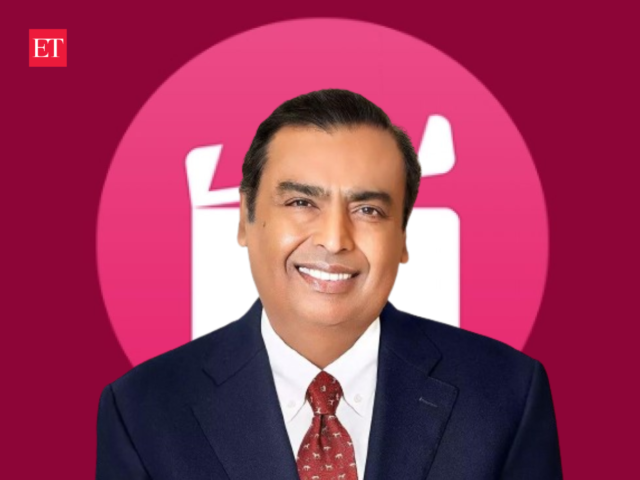
Mukesh Ambani’s JioCinema, which largely bulked up in the last one-and-half-years with popular content addition for kids to adults and streaming of the cash-rich Indian Premier League, has already stepped up the content fight with rivals Netflix, Amazon or Disney Hotstar. It, in fact, also showed Indians how freemiums work after offering all content for free, but with ads. That model was soon taken up by some other OTT players, including Disney Hotstar (which will come under Reliance’s roof subject to regulatory clearences), which streamed the World Cup for free on handheld devices.
Ambani is now asking for less than a rupee per day for premium content, a move that is seen to be another disruptor for the subscription video-on-demand market with such dirt-cheap pricing on a platform that streams IPL and Game of Thrones, besides almost all cartoons that kids love.
By making premium entertainment accessible at affordable rates, JioCinema aims to attract a wider audience and solidify its position as a leading player in the streaming space.
The pricing move also comes as a strategic response to the evolving demands of consumers and the competitive landscape of the streaming industry.
Analysts at Elara Securities have observed that JioCinema’s decision to slash prices for its premium offering reflects several strategic considerations.Firstly, the company aims to expand its subscriber base by offering a more comprehensive content library beyond exclusive Hollywood content that may not have seen a big offtake. Secondly, leveraging its robust distribution network in-house via Jio (mobile, fibre), JioCinema can bypass the need for partner tie-ups, giving it a competitive advantage over its peers, Elara said.
Thirdly, by catering to the premium segment of users who value ad-free content, JioCinema aims to bolster its revenue streams and drive scale in its pay-based revenue model. Finally, this move positions JioCinema to gain a competitive edge against global OTT platforms operating in the Indian market.
The aggressive pricing strategy is a testament to JioCinema’s commitment to democratising access to premium entertainment for every Indian household. Moreover, the decision to offer live sports and catch-up broadcast content for free underscores JioCinema’s dedication to providing a diverse range of content to its users.
According to Karan Taurani, an analyst at Elara, sports content will remain free on JioCinema, indicating a continued reliance on advertising revenue to support sports programming. While this may result in a slight negative impact on sports advertising expenditure on television, there are potential opportunities for growth in the future.
Following the merger of RIL and Disney, pending regulatory approvals, there may be the possibility of bundling sports content on TV and digital platforms, which could lead to increased overall advertising revenue, Taurani said.
Sports content has the potential to capture a larger share of the digital advertising market due to its availability for free, currently accounting for only 6-8% of India’s digital ad spends. Additionally, catch-up TV content will also remain free on JioCinema, supported by advertisements. It is estimated that catch-up TV content forms a significant portion of JioCinema’s non-sports content viewership, the analyst said.
Kiran Mani, CEO of Viacom18 Digital, said the new offering breaks down barriers to accessing premium content, with features like 4K streaming, best-in-class audio, offline viewing, and no device restrictions. This customer-centric approach reflects JioCinema’s commitment to delivering an unparalleled entertainment experience to users across the country.
With an extensive content library featuring top-tier titles from Hollywood studios like Peacock, HBO, Paramount, and Warner Bros. Discovery, JioCinema Premium offers a diverse array of entertainment options in multiple languages. This strategic move not only enhances JioCinema’s competitive position but also raises the bar for streaming services in India.
As the streaming market in India continues to grow rapidly, JioCinema’s disruptive pricing strategy may further reshape the industry landscape and drive further consolidation among players.
By offering premium entertainment at enviable rates, JioCinema is poised to capture a significant share of the market and emerge as a dominant player in the streaming space.
India is a price-conscious market that had earlier forced Netflix to cut prices to make inroads, while there are several regional OTTs that command a good subscriber base as they attract the local cinema-going fandom.
Elara notd, on average, broadcaster-based OTT platforms in India charge around Rs 103 per month (such as Zee5, Sony Liv, and Disney Plus premium plans), while global OTT giants charge around Rs 358 (like Netflix premium plan and Amazon Video). This indicates that JioCinema Premium’s pricing offers a significant discount of 86% compared to the average price of its peers.
“However, Jio Cinema’s depth of offerings in originals/global content remains much lower compared to global peers,” Taurani said.
India’s OTT video market, which accrued $3 billion in revenue in 2022, is anticipated to more than double to nearly $7 billion by 2027, according to Media Partners Asia.
To be sure, streaming in India remains a capital-intensive venture due to substantial content expenses along with hurdles in monetisation. India, known for its price-sensitive market, records the lowest average revenue per user (ARPU) at $7.2, as highlighted by RBSA Advisors. Consequently, monetising through subscriptions presents a formidable challenge.








































